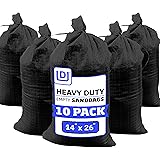Understanding Weather Risks
Identifying Type of Weather Emergencies
When preparing for weather emergencies, the first step is understanding the types of threats you may face. This can vary based on where you live, whether it’s hurricanes, blizzards, thunderstorms, or wildfires. Each type of emergency requires a different approach in preparation.
For instance, if you’re in a hurricane zone, you’ll want to focus on securing your home and having an evacuation plan in place. On the flip side, in areas prone to wildfires, you should prioritize creating defensible space around your property.
Staying informed about local forecasts is crucial; I always keep an eye on my local weather station. This way, I am not just reacting but preparing well ahead of time.
Assessment of Vulnerabilities
Next up is assessing your vulnerabilities. Take a close look at your living situation. Do you live in a flood-prone area? Is your home structurally sound against strong winds? Performing this assessment can help you determine what specific preparations are necessary.
I remember doing a thorough check of my own home after a major storm hit our area. I discovered a few leaks I had ignored, which could have caused serious damage had the storm gotten worse. Your home’s safety is number one!
Once you identify these weaknesses, you can start fortifying your home, whether it’s sealing windows or reinforcing the roof. A stitch in time saves nine, as they say!
Gathering Resources and Information
You can never prepare too much, so gathering resources and information is key. This includes everything from physical supplies to emergency contacts. I personally keep a list of essential phone numbers in my wallet—my family, local emergency services, and even my neighbors.
Don’t forget about non-perishable food, water, first-aid kits, and other essentials. I’ve built up my emergency stockpile over years, and it really gives me peace of mind knowing I’m ready to go.
== > What if ... Get a FREE Subscription to PREPARE
Information is also power. Keeping up with local news through social media or radio can help you stay ahead of the game during any weather emergency.
Creating an Emergency Plan
Developing a Family Emergency Plan
A solid emergency plan can make all the difference. Sit down with your family and discuss what to do in various scenarios. For example, how will you communicate if you get split up? It’s a good idea to set up meeting points and communication methods.
Several years ago, during a severe storm, my family and I implemented our emergency plan, and it went off without a hitch. Everyone knew exactly what to do, and that sense of order made a chaotic time a lot easier to handle.
Don’t forget to review and practice this plan regularly. Just like any good routine, keeping it fresh helps everyone remember what to do when the time comes.
Preparing for Evacuations
If you live in an area prone to severe weather, you need to consider potential evacuations. Make a checklist of what to take with you—important documents, medications, and perhaps a few cherished items. I also make a point of having a “go bag” ready, filled with the essentials.
I can tell you firsthand, having an evacuation strategy saves stress in a crisis. You don’t want to find yourself scrambling last minute. A little prep goes a long way.
Make sure to keep your gas tank filled and know multiple routes out of your area. When disaster strikes, the last thing you want to do is wonder which way to go!
Staying Updated During Emergencies
To ensure safety, it’s crucial to stay updated during a weather emergency. Utilize local news channels, social media, and radio broadcasts to receive real-time information about the situation.
In one storm, I relied on a weather app that sent me alerts, allowing me to make informed decisions quickly. Without those updates, I might not have hunkered down as efficiently.
Communicating with friends and neighbors during a weather emergency can also create a strong support system. Sometimes, sharing information can help us all stay safe.
Get Preparedness and Self-Reliance Tips. Subscribe Now!
Building an Emergency Supplies Kit
Essential Supplies for Your Kit
Your emergency kit could be a literal lifesaver. I recommend starting with the basics—water, food, first-aid supplies, a flashlight, and batteries. This might sound basic, but it’s so easy to underestimate these essentials.
When I created my kit, I included non-perishable items like canned goods and energy bars. I also threw in things like toilet paper and hygiene items—because let’s be real, they’re crucial!
It’s a good practice to rotate food supplies annually; I make sure to check expiration dates to keep everything fresh. Packaged items may last long, but it’s better to be safe than sorry!
Personalizing Your Emergency Kit
Everyone has different needs, so consider personalizing your kit. If you have pets, include food and water supplies for them. If you have young children, pack items they love—comfort is key in stressful situations.
After creating my kit, I realized I should also consider things like medications and personal hygiene products tailored to my family’s needs. It’s worth the extra thought!
Also, think about including entertainment options—books or games—to keep spirits up if you’re stuck waiting it out. A little distraction can do wonders in tough times.
Regular Maintenance of Your Kit
Having the supplies is one thing, but maintaining your kit is just as important. Set a schedule, perhaps every six months, to review your supplies. I do it around the changing of the seasons; it’s easy to remember!
Make sure everything is in working order—batteries charged, food fresh, and everything organized. I also love checking off items from my checklist, just helps me feel all the more prepared!
Keeping your kit updated might just be the difference between comfort and chaos when a storm rolls in. It’s all about being one step ahead!
Community Preparedness
Engaging in Local Programs
Community action makes a huge difference in weather preparedness. I’ve attended local meetings and workshops focused on emergency preparedness; connecting with others can provide valuable insights and support.
Being part of a community means sharing knowledge and resources. Collaborating with neighbors to plan for emergencies only strengthens our likelihood of staying safe.
Don’t ignore local initiatives; they often provide training on first aid or disaster response, which is incredibly beneficial when panic strikes.
Sharing Resources with Neighbors
Sometimes our neighbors have tools or resources that can help during emergencies. I’ve set up a group chat with my neighbors where we share resources and updates on any upcoming weather or local preparations.
By pooling resources, like a shared generator in case of a power outage, everyone has a little backup. It’s all about having each other’s backs!
I once borrowed a heavy-duty tarp from a neighbor before a storm hits. It made a real difference in keeping our outdoor furniture safe. Talk about teamwork!
Volunteering for Emergency Response
Consider volunteering for local emergency response teams. My first experience with this really opened my eyes to the behind-the-scenes efforts during weather emergencies.
Offering even a small amount of your time can make a big impact. Plus, it’s a great way to gain skills that may help you and your community during a crisis!
Remember, we’re all in this together, and supporting one another is what community is really about. Let’s show up for each other!
FAQs
- 1. What should be included in my emergency kit?
- Your emergency kit should include water, non-perishable food, a first-aid kit, a flashlight with extra batteries, personal hygiene items, and any medications you may need.
- 2. How often should I check my emergency kit supplies?
- I suggest checking your supplies at least every six months to ensure everything is fresh and in working order. Aligning this with the seasons can help you remember!
- 3. How do I create a family emergency plan?
- Gather everyone in your household to discuss different weather scenarios and have a straightforward plan in place for communication and meeting points in case of separation.
- 4. What types of emergencies should I be preparing for?
- It varies from location to location, but common weather emergencies include hurricanes, floods, blizzards, and wildfires. Analyze your location and prepare accordingly!
- 5. How can I engage with my community regarding emergency preparedness?
- Participate in local preparedness workshops, share resources with neighbors, and consider volunteering for emergency response organizations to build a stronger community network.






